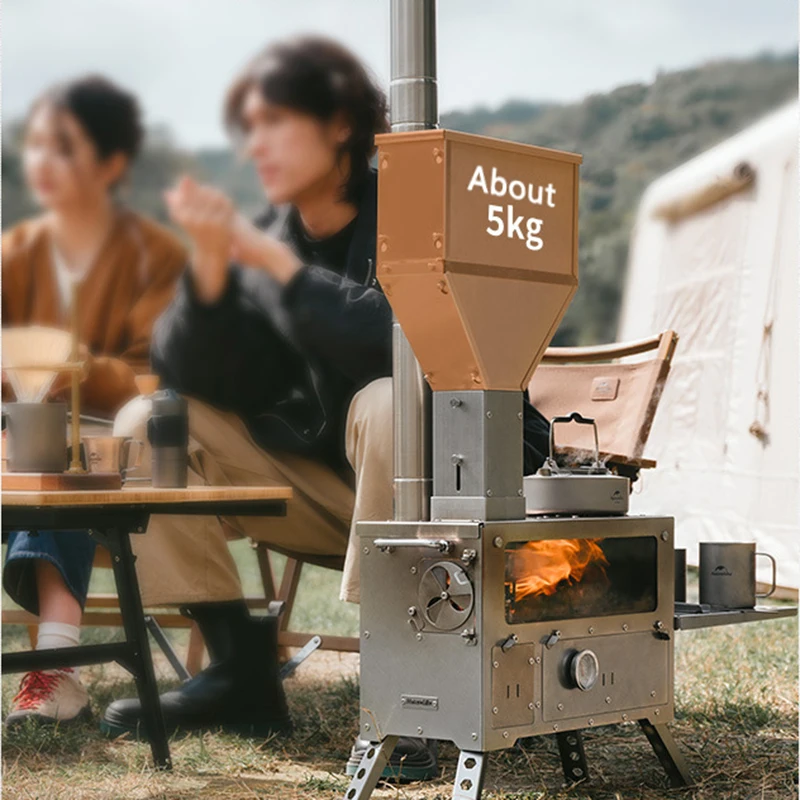
When it comes to heating options for camping or residential use, wood pellets have gained significant popularity in recent years. These small, cylindrical pellets made from compressed sawdust or biomass materials offer numerous benefits over traditional wood burning. One key advantage is their ability to produce very little creosote during combustion. In this comprehensive guide, we will delve into the world of wood pellets and explore how their clean-burning properties make them an efficient and environmentally friendly fuel source.
1. Understanding Creosote and Its Impact:
1.1 The Nature of Creosote: Creosote is a black, tar-like substance that can accumulate in chimneys, flues, and stovepipes when wood is burned. It is a byproduct of incomplete combustion and consists of highly flammable and potentially hazardous compounds.
1.2 The Dangers of Creosote Buildup: Excessive creosote buildup poses several risks, including chimney fires, reduced heating efficiency, and compromised air quality. It is crucial to minimize creosote production to ensure safe and efficient heating.
2. The Advantages of Wood Pellets:
2.1 Clean-Burning Properties: Wood pellets are manufactured using highly controlled processes, resulting in consistent quality and low moisture content. When burned, they release minimal smoke and particulate matter, significantly reducing the formation of creosote.
2.2 Efficient Combustion: Wood pellets have a high energy content and a uniform shape and size, allowing for efficient and complete combustion. This results in higher heat output and fewer byproducts, including creosote.
2.3 Environmental Benefits: Wood pellets are considered a carbon-neutral fuel source since the carbon dioxide released during combustion is roughly equivalent to the carbon dioxide absorbed by the trees during their growth. Choosing wood pellets over fossil fuels helps reduce greenhouse gas emissions and reliance on non-renewable resources.
3. The Science Behind Minimal Creosote Production:
3.1 Low Moisture Content: Wood pellets have a moisture content of around 5-10%, significantly lower than traditional firewood, which can contain up to 20% moisture. The low moisture content ensures more complete combustion and reduces the production of creosote.
3.2 Consistent Fuel Composition: Wood pellets are manufactured with precise ratios of sawdust or biomass materials, resulting in a consistent fuel composition. This consistency contributes to efficient combustion and minimizes the formation of creosote.
3.3 Controlled Combustion Process: Wood pellet stoves and heaters are designed with advanced combustion systems that optimize airflow and ensure thorough combustion. This controlled process further reduces the production of creosote.
4. Tips for Minimizing Creosote Buildup:
4.1 Proper Maintenance and Cleaning: Regular maintenance, including chimney inspections and cleanings, is essential for minimizing creosote buildup. Engaging the services of a professional chimney sweep is recommended to ensure thorough cleaning and safe operation.
4.2 Quality Fuel Selection: Choosing high-quality wood pellets from reputable manufacturers ensures a consistent fuel source with low moisture content. Avoid using wet or low-quality pellets, as they can contribute to increased creosote production.
4.3 Proper Ventilation: Adequate ventilation is crucial for efficient and safe combustion. Ensure that your wood pellet stove or heater is properly installed with adequate airflow and venting, following manufacturer guidelines and local building codes.
5. Additional Benefits of Wood Pellets:
5.1 Convenience and Ease of Use: Wood pellets are conveniently packaged in bags and can be easily stored and transported. They eliminate the need for chopping and storing firewood, making them a hassle-free heating option for camping or residential use.
5.2 Cost-Effectiveness: Wood pellets are generally more affordable than other fuel sources, such as propane or electricity, making them a cost-effective choice for heating. Additionally, their high energy content ensures efficient heat output, further reducing fuel expenses.
5.3 Versatility: Wood pellets can be used in various heating appliances, including camping pellet stoves, residential pellet stoves, and biomass boilers. Their versatility makes them suitable for a wide range of applications, from camping trips to heating entire homes.
Conclusion:
Wood pellets offer a clean, efficient, and environmentally friendly alternative to traditional wood burning. By producing very little creosote during combustion, they minimize the risks associated with creosote buildup and ensure safe and efficient heating. Whether you're camping in the great outdoors or heating your home, choosing wood pellets as your fuel source is a responsible choice that benefits both you and the environment. Embrace the minimal creosote advantage and enjoy the warmth and comfort provided by this sustainable fuel option.
